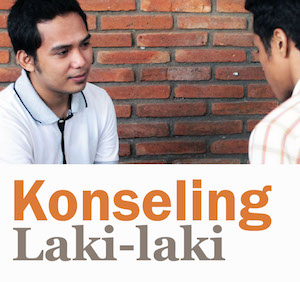Oleh : Laksmi Amalia
This email address is being protected from spambots. You need JavaScript enabled to view it.
Fourteen years after Millennium Development Goals (MDGs) were launched, there are some goals that are not easy to achieve. Although almost two hundred countries prepare strategy and innovative finance to achieve these goals, they could not combat poverty which is the main problem in many developing countries. Based on Ban Ki-moon’s statement, reducing child and maternal mortality are the most difficult goals to achieve globally. In Indonesia, reducing maternal mortality, combating HIV and malaria, and making clean water available fail to be reached. To achieve these goals, women have significant roles in implementing strategy from government so that empowering women is the key to reach the goals in 2015.
Seventy percent of poor people in the world are women. It means that they do not have the right to live properly because poor people could not access nutritious food, good sanitation and health care access. This condition leads to difficulty in achieving women’s health and shows the high women’s mortality rate. In Indonesia, maternal mortality rate is 228/100.000 live births based on Indonesia Health and Demography Survey 2007 and it should be decreased to 102/100.000 live births in 2015. Until June 2010, there were 21.770 AIDS cases in Indonesia based on Ministry Health Report. Infant and child mortality rate are still high because they decrease slowly. In 2015, infant mortality rate should decrease until 23/100.000 live births and child under five years mortality rate should decrease until 32/100.000 live births.
Reducing by three quarters maternal mortality ratio is one of the target among 18 targets in MDGs. The indicators of this target are maternal mortality ratio and proportion of birth attended by skilled health personnel. There are many causes that make high maternal mortality rate in Indonesia such as severe bleeding, sepsis, unsafe abortion, eclampsia caused by gestational hypertension, and obstructed labor. Routine antenatal care is the key to solve these problems because women could monitor her pregnancy condition and health personnel such as doctor or midwife could give the suggestion to the mother about her problems related to her pregnancy. For example, if the mother has hypertension during pregnancy, she is suggested to deliver the baby in the hospital so that her delivery process is safer without eclampsia.
Health care and referral access should be available especially during the delivery process. Skilled health personnel could decrease the incidence of obstructed labor and sepsis caused by unsafe delivery. If there is bleeding in delivery process, the women should be referred to the hospital which make the blood available so that the transfusion could be done. The access of women to get contraception is important to prevent unwanted pregnancy which could make the women to have unsafe abortion. Unfortunately, most of women have weak position in a family especially the women living in rural area so that their husbands and their big family would decide where they deliver without concerning the women’s condition. The women also do not get her reproductive right because sometimes their husbands prohibit them to get contraception and delay the pregnancy. Indeed, strong women’s roles could make safe motherhood realized.
The high rate of infant mortality rate is caused by unsafe delivery which is usually done at home by unskilled birth attendant, low birth weight, and neonatal infection. Women could prevent these conditions by doing antenatal care during pregnancy in order to avert low birth weight baby. They could also deliver baby with asking help to skilled health personnel in order to have safe delivery and prevent neonatal infection such as neonatal tetanus.
The women’s knowledge about healthy nutrition is very substantial to prevent malnourished children. Besides that, if the women could have strong financial ability they could buy their children nutritious food to make their children healthier. Preventing malnutrition could decrease infectious disease rate in children because infectious disease is the main cause of child mortality. In fact, the children’s health depends on their mother’s effort.
In addition to safe motherhood and children’s health, women could decrease the spreading of HIV and AIDS. Nowadays, the number of housewives infected with HIV increase because of the increasing evidence of heterosexual HIV transmission. Their husbands who are usually injected drug users or prostitute client’s could spread HIV and AIDS. Women could encourage their husbands to do Voluntary Consulting and Testing (VCT) and support them to disclosure their status to their wives if their husbands are at risk of getting HIV. Women must also suggest their risky husbands to use condoms as a protection device. Women should know about HIV and AIDS and do VCT in order to prevent unwanted transmission to their babies if they have planned to have children. Prevention of Mother to Child Transmission (PMTCT) program which consists of giving antiretroviral drugs to the mothers and babies, doing caesarean operation to deliver the baby, and preventing breastfeeding is the most important step to decrease the number of children infected with HIV and AIDS.
However, all those steps achieving MDGs could not succeed without strengthening women’s roles and position. Low number of women’s participation in education reflects gender inequality and failure of women empowerment. Uneducated women could not have the power to improve their life. They could not work and earn money so that they could not get their independency and freedom to claim their rights to live healthy. If the government wants to correct the women’s quality of life, the government could give the easy access to get high education level for women. Educated women are expected to participate more to achieve safe motherhood, children healthy, and decreasing the number of HIV infected people.
It is clear that achieving MDGs could be done with high participation of women. Promoting gender equality and empowering women as stated in goal 3 of MDGs could be a basic foundation to reach the other goals. Furthermore, implementing the real action with appropriate policy should be done immediately so that these goals are not only the promises from almost 200 countries in UNO.







